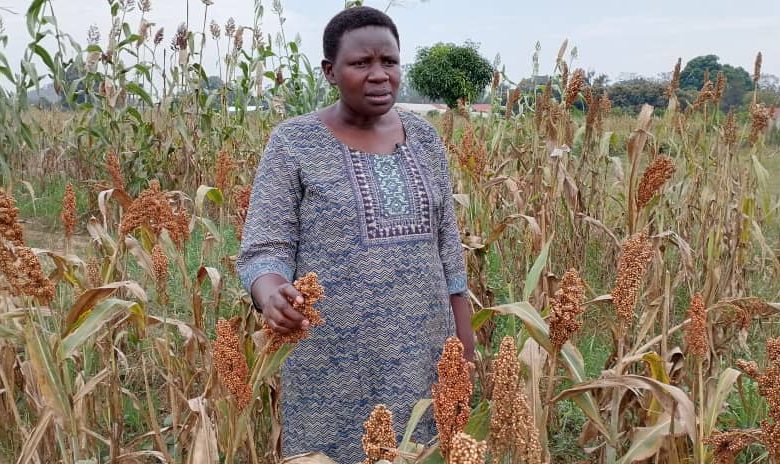Scientists at NaSARRI to develop iron and zinc bio-fortified sorghum

Scientists at the National Semi- Arid Resources Research Institute (NaSARRI) in Serere district have started the process of developing sorghum rich in both zinc and iron.
Sorghum is staple food for Ugandans in the East, North and parts of the West; with the cereal regarded a cheaper source of energy especially among low income groups.
The crop is drought tolerant and high yielding, further proving its importance to the communities that cultivate it. Sorghum is also important in the brewery sector, and is a raw material to many beer brands. The crop is also a key animal fodder.
Despite these advantages, the crop lacks enough quantities of iron and zinc – trace elements needed for effective operation of the body.
Dr Scovia Adikini, the team leader dry land cereals research at NaSARRI, says efforts have been started to develop sorghum varieties bio-fortified with both iron and zinc.
Bio-fortification is the process of increasing the micronutrient content of a food crop through selective breeding, genetic modification, or the use of enriched fertilizers
“We are aiming at bio-fortifying sorghum to alleviate hunger in the dry lands of East Africa. You may find that almost everybody in these areas is malnourished and yet sorghum is the major crop grown,” she said.
“You realize that some of the varieties that are grown within those regions have low nutrient quality in terms of micronutrients especially iron and zinc not only in the human beings but also in livestock because in the dry lands region of East Africa, most farmers practice both crop production and livestock rearing,” she added.
Sorghum contains moderate levels of iron and zinc (30 mg/kg and 20 mg/kg, respectively). These levels will be increased to 60mg/kg and 32mg/kg for iron and zinc respectively.
Most farmers feed their animals sorghum stovers after harvesting, implying those animals also suffer from nutritional deficiencies.
“Our focus of research cuts across both humans and livestock with the aim of improving the quality of sorghum that is consumed. We want to improve nutrition in the households of the small holder farmers that directly depend on sorghum. That’s why our focus is to improve on the micronutrient content of sorghum that is consumed in these households by increasing iron and zinc content,” Adikini said.
The research funded by Foundation for Food and Agricultural Research, the International Maize and Wheat Improvement Center (CIMMYT) and NARO is expected to take four years to complete. Partners are Makerere University, AgroMax Uganda Ltd and other international partners including Clemson University and Cornell University.
The intervention will also look at increasing on the acreage and quantity produced by the farmers in dry lands around the country. This, it is believed, will help reduce food insecurity in these areas.
The breeders have collected germplasm from around the country to use in the research. Adikini insists the process will not involve Genetic Modification technology.
“We have a wider germplasm of sorghum that has been collected across the region within Uganda and also outside the country. We are trying to screen this material to get the best can be used to improve others in terms of iron and zinc content.
At NaSARRI we do conventional breeding. We don’t do any genetically modified kind of research. Under conventional breeding we get pollen from one plant of interest and fertilize another plant of interest,” Adikini said.
Sorghum has higher levels of cyanide which can be fatal to animals when consumed.
“Majority of our farmers have a tendency of after harvesting sorghum to just gaze their livestock in the field without the knowledge of whether that variety has higher levels of cyanide or not. There are circumstances where animal deaths are reported but the causes are not known. So our research is beyond human consumption. We are focusing on ensuring that the varieties we release do not only fit human consumption but the stovers also that animals feed on also have low levels of cyanide,” Adikini said.






